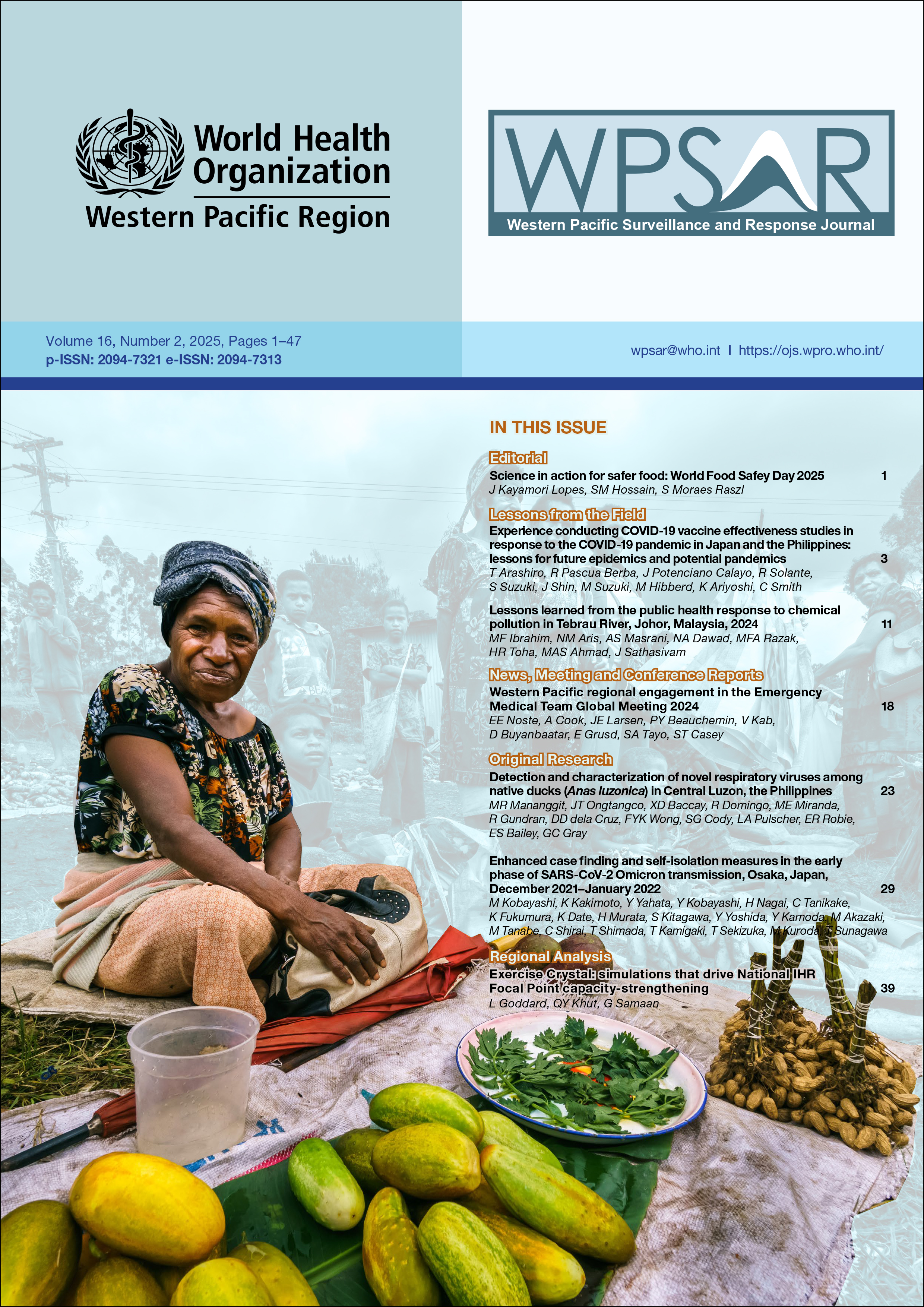Enhanced case finding and self-isolation measures in the early phase of SARS-CoV-2 Omicron transmission, Osaka, Japan, December 2021–January 2022
DOI:
https://doi.org/10.5365/wpsar.2025.16.2.1139Keywords:
COVID-19, SARS-CoV-2, disease outbreaks, contact tracing, epidemiologyAbstract
Objective: The severe acute respiratory syndrome coronavirus 2 (SARS-CoV-2) variant B.1.1.529 (Omicron) was first detected in Japan in November 2021. In Osaka, public health centres subsequently increased active case finding and encouraged self-isolation. This study investigated the effectiveness of these countermeasures.
Methods: Cases targeted for analysis were persons who had neither recently travelled abroad nor had contact with foreign tourists but tested positive for SARS-CoV-2 between 24 November 2021 and 4 January 2022 and were suspected or confirmed to have the Omicron variant. We performed a descriptive analysis and calculated the reproduction number (R) for each generation using the branching process method. Genomic sequencing data were analysed to plot a haplotype network.
Results: A total of 251 cases were analysed. The median age was 30 years, and 46% (115/251) were in their 20s or younger. The first Omicron case in Osaka was detected on 21 December 2021. Local public health centres conducted health monitoring and contact tracing. We analysed R, using information from six clusters, including 42 pairs with a clear relationship between the case and the infected contact (infector–infectee pairs); the clusters had 19, 21 and 2 cases in each subsequent generation. The basic R (t = 0) was estimated to be 3.2, and subsequent generations (t = 1, 2) of R decreased to 1.1 and 0.1, respectively. The haplotype network showed that these cases constituted a monophyletic group with others detected around Osaka, indicating that these case-related clusters had been contained and were not involved in the nationwide Omicron waves.
Discussion: Active case finding and self-isolation were found to be effective in limiting the spread of an emerging novel variant.

